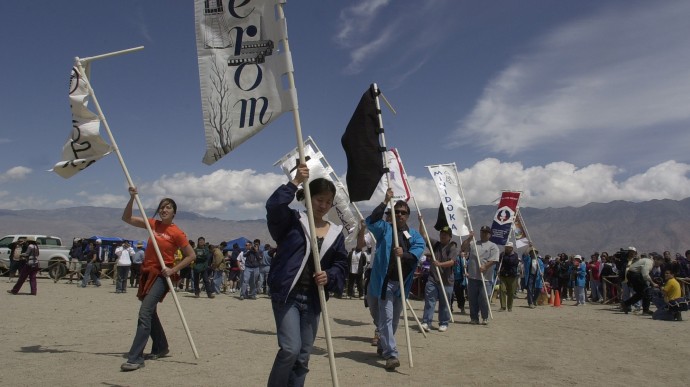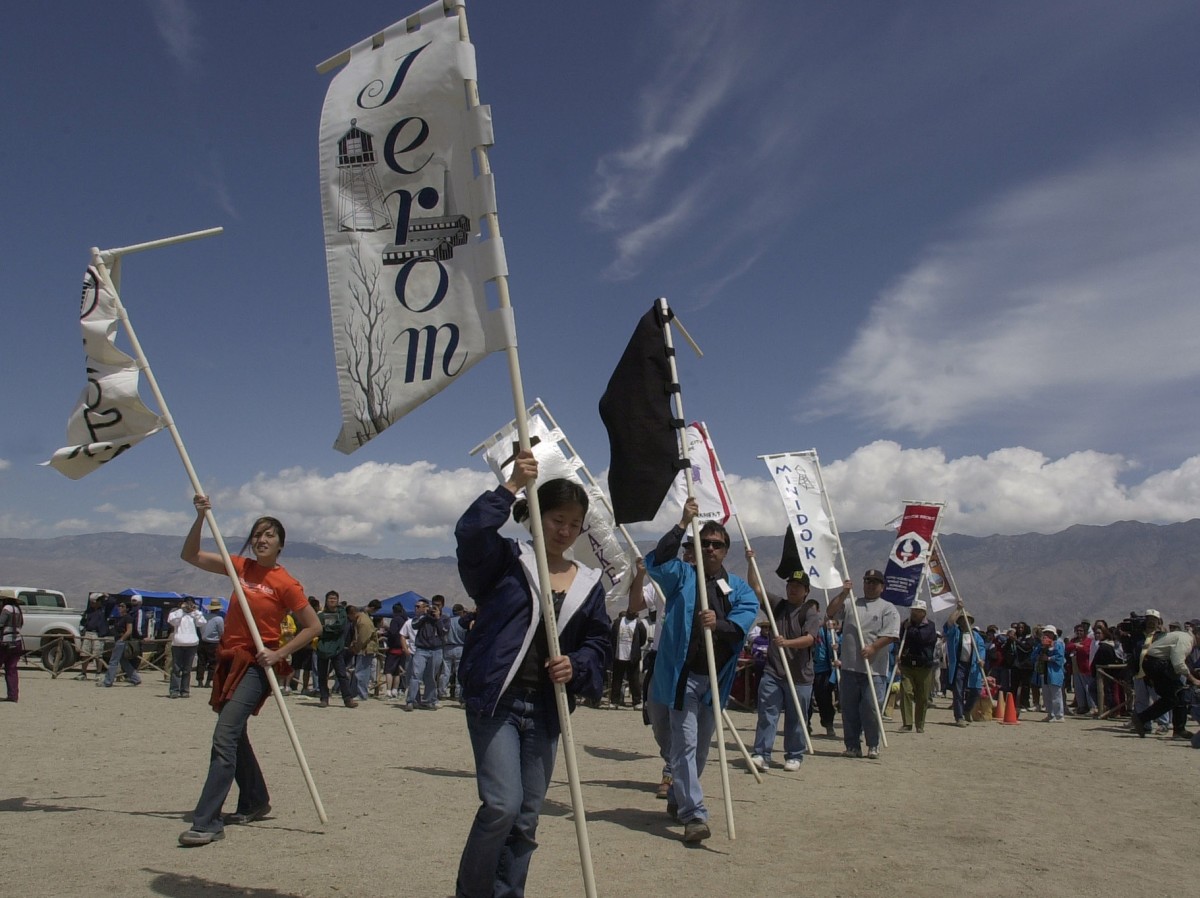
LOS ANGELES – The Los Angeles Department of Water and Power has not been popular in California’s remote Owens Valley since it began diverting water from the Owens River a century ago, reducing the area to a dust bowl. Now it’s making noise in the valley again by proposing to build a $680-million 200-megawatt solar energy plant within view of the site that served as a Japanese American internment camp during World War II.
In 1992, Congress designated the Manzanar internment camp between the small towns of Lone Pine and Independence a National Historic Site, acknowledging its importance to the history of civil rights in the U.S. and to families whose members were banished there. Opponents of the solar project say that history — and the scenic view from Manzanar — would be dishonored if it were built.
“The importance of maintaining and enhancing the physical characteristics of the Manzanar National Historic Site cannot be downplayed or overlooked,” said Bruce Embrey, co-chair of the Manzanar Committee, which lobbied for the 814-acre site to be protected by the National Park Service. The unobstructed view, he added, was “one of the most powerful parts” of the experience of visiting Manzanar.
The plant’s one million solar panels would provide 440 gigawatt-hours of power annually, enough to service about 75,000 homes in Los Angeles and the Owens Valley. A draft environmental report on the project was released recently and construction is scheduled to begin in 2014, with completion by 2019.
Other opponents of the project include the park service, Japanese-American organizations and the Center for Biological Diversity, which is urging the LADWP to consider alternative locations. “For the sake of our visitors’ experiences and the memories of our former internees, we must advocate for the area to remain undeveloped,” Manzanar Supt. Les Inafuku told the Los Angeles Times.
But the DWP insists the 1,200-acre solar field would appear only as a thin, dark strip at the base of the Inyo Mountains and would not impinge on the integrity of the Manzanar site.
History of the Manzanar War Relocation Center
Beginning in 1942, the former Manzanar War Relocation Center was home to 11,070 Americans of Japanese ancestry who were forcibly interned during World War II. Efforts to preserve the site began in 1969 when about 200 people made a pilgrimage to Manzanar that was organized by Japanese-American students.
The proposed Southern Owens Valley Solar Ranch would be built on top of the internment camp’s historic landfill, which has never been fully surveyed for archaeological resources, according to the Manzanar Committee.
Embrey said the proposal was another blot on the record of the DWP, which opposed the establishment of a federally-administered historic site, arguing for a local memorial park instead. The very idea, he said, that any land around the site “could be used for a massive generating facility” without harming preservation efforts “is simply beyond insensitive.”
The Manzanar Committee has called on the DWP to revisit the proposal and find another, “more suitable” location for the solar ranch.


